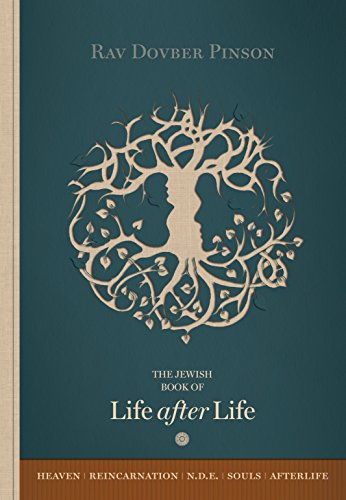Ever wondered what happens after you kick the bucket? Well, you’re not alone. In this review, I’m talking all about the classic book ‘Life After Life’. Get ready for tales of near-death, a peek at the science (and not-so-scientific bits), and my honest take—spelling mistakes and all. Grab a snack, hold on to your socks, and let’s see if this book really makes you rethink the afterlife or just wish you’d picked up something about cat yoga instead.
Life After Life by Raymond Moody – The Book That Didn’t Let Me Nap
In a nutsheel
‘Life After Life’ is a classic non-fiction book by Dr. Raymond Moody. He is like the Indiana Jones of near-death experiences (NDEs), except with less running and more hospital gowns. This book kicked off the whole NDE craze back in the 1970s, and it’s still going strong—like my Aunt Edna’s fruitcake at Christmas.
The genre here is investigative non-fiction with a side of philosophy and a dash of spirituality. Moody gathers stories from people who say they almost died and saw some wild stuff—bright lights, tunnels, their old pets doing backflips (ok, maybe not that last one).
Themes in the book explore what might happen when you croak—er, pass on—and it asks loads of questions about life, death, consciousness, and whether or not your grandma is waiting for you at the end of the tunnel. The book doesn’t give you hard answers, but it sure gives you a lot to think about the big nap (without actually taking one!).
Near-Death Experiences: Real Stories from the Edge
Let’s be honest. When I first picked up Life After Life by Raymond Moody, I thought it might just be another book that talks about bright lights and angels playing harps. But boy, was I wrong. The stories in this book about near-death experiences (NDEs) are not only shocking—they’re also pretty weird. And I mean that in the best way.
Moody shares real accounts from people who say they’ve seen things that most of us only see in movies. We’re talking about floating out of their bodies, meeting loved ones who have “moved on,” and feeling the world’s warmest welcome party. I remember reading about one lady who was more worried about her pie burning in the oven than the fact that she just, well, died. That’s dedication to dessert if you ask me.
What makes this book stand out for me are the huge range of stories. Some folks found comfort and peace, while others just wanted to come back and finish watching their favorite TV show. Moody does a great job of showing that everyone’s NDE is different. He doesn’t judge or say everyone’s right—he just lets people tell their story. That makes these personal tales feel honest.
Not everything is perfect, of course. Some stories repeat themselves, and after a while, you might feel like you’re stuck in an endless loop of bright lights and tunnels. But if you’re curious about what might happen when you kick the bucket, this book is a buffet of fascinating tales.
Stick around, because next I’ll spill the beans about the writing style and if this book is as easy to read as your grandma’s recipe card.
Writing Style and Ease of Reading in Life After Life
If you have ever tried reading a science book while half-asleep and ended up drooling on the pages, fear not—Life After Life is pretty safe from such disasters. Moody’s style is simple, almost like he’s sitting across from you with a mug of tea, chatting about the strangest interviews he’s ever had. There’s not a lot of fancy shmancy language or words you would need a PhD to read.
I will admit, the stories can feel a bit repetitive after a while. It’s like hearing your uncle tell the same fishing story at every family BBQ—entertaining the first time, but after the tenth time you want to throw his hat in the lake. The upside is that you never get lost. Moody repeats himself just enough that if your mind wanders to last night’s pizza in the fridge, you won’t miss anything crucial.
I read the book over a weekend, sandwich in one hand, and never once felt like I needed to reach for a dictionary or aspirin. The chapters are short and broken up with enough real stories that you can put the book down any time and pick right back up. No literary gymnastics here, just straight talk about life, death, and all the weird stuff in between.
Ready your magnifying glass, because up next we’ll be picking apart the scientific claims and spiritual insights—no Ouija boards required!
Science or Spirit? ‘Life After Life’ and the Battle of Explanations
Now, here’s where things heat up like my old toaster catching fire. ‘Life After Life’ doesn’t just tell stories about folks who peek around the corner of death—it also pokes at two big questions: Is all this stuff about tunnels and bright lights just wires in our brains misfiring, or is it a sneak preview of something more?
Moody, the author, tries to balance both sides like a circus act. On one hand, he talks about the science—oxygen loss, endorphins, and the possibility that near-death experiences (NDEs) are just our brains going haywire when we’re close to kicking the bucket. I get it; even my brain feels weird when I’ve skipped breakfast, so who knows what happens when your heart skips a beat?
But then, Moody brings in the spiritual side, which is—let’s be honest—way more fun at dinner parties. He shares tales that hint there might be something beyond this life, making you wonder if Grandma really is hanging out on a cloud somewhere, playing bingo with Elvis. Some stories in ‘Life After Life’ have uncanny details that make my skeptical uncle raise an eyebrow. But the book never says for sure—Moody plays it cool, letting readers chew on the science and sip the spiritual Kool-Aid at their own pace.
The only downside? I wish there were a bit more hard proof and a bit less “maybe.” But hey, if we had all the answers, what would we argue about over pie?
Next up: How does ‘Life After Life’ mess with the way we look at life, death, and everything between? Grab your thinking hat, because things are about to get philosophical—Steve style.
How ‘Life After Life’ Changed the Conversation About What Happens Next
If you had asked me ten years ago what happens after we kick the bucket, I would have mumbled something about ‘that’s above my pay grade’ and ordered another burger. But reading ‘Life After Life’ by Raymond Moody changed how I, and a ton of other folks, think (and talk) about the big sleep.
This book didn’t just throw a rock in the pond—it made waves. Before Moody, most people kept their near-death stories to themselves, or maybe only shared them at awkward family dinners. Suddenly, with this book, a parade of people started telling their own wild tales: white lights, tunnels, dead uncles waving from a cloud, the whole nine yards. It’s like Moody gave us all permission to admit we’d seen weird stuff without worrying someone would call the men with the nets.
The impact of ‘Life After Life’ goes beyond book clubs and late night chats. Hospitals, clergy, and even your nosy neighbor Marge started asking new, deeper questions. Is there more to us than bone, teeth, and the occasional embarrassing Facebook post? For some, the book was a comfort, making the scary stuff less scary. For others, it opened up a fresh debate about what, if anything, comes next. Spoiler: it’s still up for debate, but at least now people argue with more gusto.
I’m not saying Moody solved the mystery—far from it. But he put the question back on the menu, and for that, I give him props. If you want a book that’ll get you thinking, talking, and maybe sleeping with the lights on for a few nights, ‘Life After Life’ is your ticket. I say, go for it!
Conclusion
So there you have it, folks—my review of ‘Life After Life’ is officially done (I can hear some of you cheering). Dr. Moody’s book gave us a weird and wonderful look at what people might see when they almost kick the bucket. I really enjoyed the wild NDE stories and the fact that Moody tries to sort science from spookiness. It’s easy to read and it got me and my friends thinking (and arguing) about life, death, and all that jazz. Sure, the book repeats itself more than my Aunt Linda at family parties, and sometimes it leans more toward belief than hard proof. But if you want to read something that makes your brain do somersaults, this is a good pick.
This wraps up my review. Now go read it, or at least pretend you did at your next dinner party!


